CAHSS Podcast Series - Animal Health Insights
The Canadian Animal Health Surveillance System (CAHSS): A shared national vision leading to effective, responsive, integrated animal health surveillance in Canada. Le Système canadien de surveillance de la santé animale (SCSSA): Une vision nationale commune qui mènera à une surveillance efficace, souple et intégrée de la santé animale au Canada.
Episodes
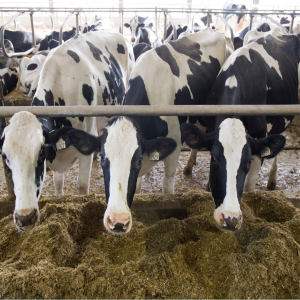
Friday Mar 21, 2025
Friday Mar 21, 2025
Highly pathogenic avian influenza (HPAI) is a contagious viral disease that continues to impact domestic and wild birds. In March of 2024, HPAI was detected in dairy cattle in Texas, and has since spread rapidly across the United States. To date, it has not been detected in Canada in cattle.
In this new miniseries, Dr. Murray Gillies, a veterinarian and the Interim Division Director for the Canadian Animal Health Surveillance System, and Dr. Henry Ceelen, a bovine veterinarian and Secretary Treasurer for the Canadian Association of Bovine Veterinarians, join Dr. Steven Roche of ACER Consulting to discuss HPAI in dairy cattle, including disease presentation, spread, and prevention, as well as the Canadian response.
Links of interest
CFIA: Highly pathogenic avian influenza (HPAI) in cattle
USDA: HPAI in livestock
Dairy Farmers of Canada and Animal Health Canada: HPAI: Biosecurity Recommendations forDairy Farmers
National Collaborating Centre for Environmental Health: Avian influenza A(H5N1) in dairy farms: An update on public health and food safety concerns
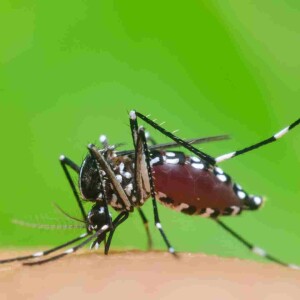
Tuesday Jun 11, 2024
Tuesday Jun 11, 2024
Les moustiques - si vous vivez au Canada, vous devez faire face à ces insectes nuisibles pendant une grande partie du printemps et de l'été. Avec le réchauffement climatique, il est probable que nous verrons apparaître quelques nouvelles variétés de cet insecte irritant dans l'espace aérien canadien, et malheureusement, la variété des espèces signifie également que nous devons faire face à de nouvelles maladies à transmission vectorielle.
Les moustiques sont porteurs et contribuent à la propagation d'une variété de conditions infectieuses à une variété d'espèces - il est donc important pour la santé publique et la santé animale de garder "l’œil dans le ciel" et de surveiller leurs mouvements, leur propagation et leurs préférences en matière d'habitat.
Heureusement, le Canada dispose d'un groupe de chercheurs qui surveillent et d'étudient ce phénomène. Dre Antoinette Ludwig, vétérinaire et épidémiologiste au Laboratoire national de microbiologie de l'Agence de la santé publique du Canada, et Marc Avramov, candidat au doctorat à l'Université Carlton, étudient les maladies transmises par les moustiques et le risque qu'elles représentent pour les populations humaines et animales, ainsi que l'impact du changement climatique sur ces maladies.
Liens d’intérêt:
Informations sur la Dre Antoinette Ludwig et ses recherches
Détails du projet Timo-CS
Relationships between water quality and mosquito presence and abundance: A systematic review and meta-analysis
Avramov, Marc & Thaivalappil, Abhinand & Ludwig, Antoinette & Miner, Lauren & Cullingham, Catherine & Waddell, Lisa & Lapen, David. (2023). Relationships between water quality and mosquito presence and abundance: A systematic review and meta-analysis. Journal of Medical Entomology. 10.1093/jme/tjad139.
Informations sur Marc Avramov et ses recherches
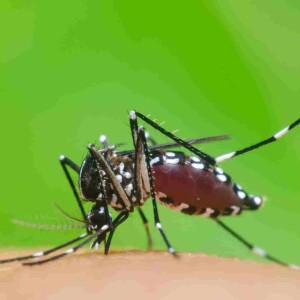
Tuesday Jun 11, 2024
Tuesday Jun 11, 2024
Mosquitoes – if you live in Canada, you deal with these pesky bugs for a significant portion of the spring and summer. With warming global temperatures, it is likely that we will see a few new varieties of this irritating insect appear in the Canadian airspace, and unfortunately, this also means we have some new vector-borne diseases to deal with.
Mosquitoes carry and help to spread a variety of infectious conditions to a variety of species – so keeping an “eye on the sky” and monitoring their movement, spread, and habitat preferences is important to public health and animal health.
Luckily, Canada has a group of researchers that are working to monitor and study this very thing. Dr. Antoinette Ludwig, a veterinarian and epidemiologist with the National Microbiology Laboratory at the Public Health Agency of Canada, and Carleton University PhD candidate Marc Avramov, both study the diseases transmitted by mosquitoes and the risk they pose for both human and animal populations, as well as the impact of climate change on these disease patterns.
Links of Interest:
Information about Dr. Antoinette Ludwig and her research
Timo-CS project details
Relationships between water quality and mosquito presence and abundance: A systematic review and meta-analysis
Avramov, Marc & Thaivalappil, Abhinand & Ludwig, Antoinette & Miner, Lauren & Cullingham, Catherine & Waddell, Lisa & Lapen, David. (2023). Relationships between water quality and mosquito presence and abundance: A systematic review and meta-analysis. Journal of Medical Entomology. 10.1093/jme/tjad139.
Information about Marc Avramov and his research
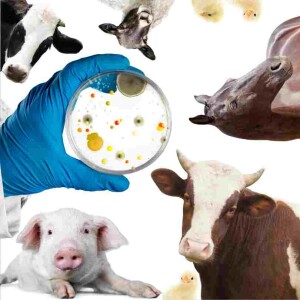
Wednesday Jun 14, 2023
Wednesday Jun 14, 2023
Les antibiotiques (un type de médicament antimicrobien) sont utilisés autant en médecine vétérinaire qu’en médecine humaine pour traiter et prévenir les infections bactériennes. Les médicaments antimicrobiens sont classés en fonction du type d'agent pathogène qu'ils combattent - par exemple, les antibiotiques sont utilisés contre les bactéries, les antiviraux contre les virus, les antifongiques contre les infections fongiques, etc. Le développement de la résistance aux antibiotiques ou aux antimicrobiens a mis en évidence l'utilisation des antimicrobiens dans le monde de la médecine humaine et dans le monde vétérinaire, conduisant à une surveillance accrue de l'utilisation des antimicrobiens (UMA) et des pratiques de dispensation, ainsi qu'à la surveillance de la résistance à ces médicaments. Au cours des dernières années, les vétérinaires et les producteurs du monde entier ont connu de nombreux changements concernant la manière dont les antimicrobiens, en particulier les antibiotiques, peuvent être prescrits, délivrés et utilisés pour la gestion des maladies des animaux d'élevage.
Le Dr Mohamed Rhouma, vétérinaire, microbiologiste et professeur adjoint à la Faculté de médecine vétérinaire de l'Université de Montréal, a voulu comprendre comment ces changements ont affecté la surveillance de l’utilisation des antimicrobiens et le développement de la résistance aux antimicrobiens chez les animaux d'élevage - et faire le point sur les connaissances actuelles en lien avec le rôle des animaux de production dans la propagation de la résistance aux antimicrobiens aux humains dans une perspective One Health. Dans ce but, Dr Rhouma et ses collègues de l'Université de Montréal et de l'Université de Gand (Belgique) ont effectué une revue de l'état actuel des connaissances sur ce sujet sous la forme d’un article qui a été publié dans la revue Veterinary sciences en septembre 2022.
Liens d’intérêt:
Rhouma M, Soufi L, Cenatus S, Archambault M, Butaye P. Current Insights Regarding the Role of Farm Animals in the Spread of Antimicrobial Resistance from a One Health Perspective. Veterinary Sciences. 2022; 9(9):480. https://doi.org/10.3390/vetsci9090480
Rhouma, M.; Archambault, M.; Butaye, P. Antimicrobial Use andResistance in Animals from a One Health Perspective. Vet. Sci. 2023, 10, 319. https://doi.org/10.3390/vetsci10050319
SCSSA Aperçu de la surveillance canadienne: une vue d'ensemble des principales initiatives de l'usage et de la résistance aux antimicrobiens chez les animaux.
Fiche d'information sur les mesures et indicateurs de l'UAM chez les animaux: Décrit quelles mesures sont utilisées pour la quantification et le signalement de l'utilisation des antimicrobiens chez les animaux
SCSSA Rapports sur l'utilisation des antimicrobiens: Outil pour choisir les mesures et indicateurs
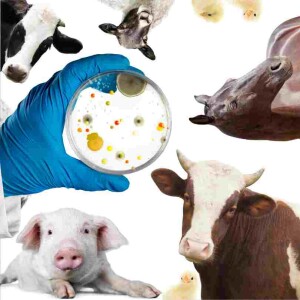
Wednesday Jun 14, 2023
Wednesday Jun 14, 2023
Antibiotics (one type of antimicrobial medication) are used in both veterinary and human medicine to treat and to prevent bacterial infections. Antimicrobial medications are classified based on the kind of pathogen they fight – for example, antibiotics are used against bacteria, antivirals against viruses, antifungals against fungal infections, etc. The development of antimicrobial resistance (AMR) highlighted the use of antimicrobials in the human and veterinary worlds, leading to increased monitoring of antimicrobial use (AMU) and dispensing practices, as well as surveillance of resistance to these medications. In recent years veterinarians and producers around the world experienced many changes regarding how antimicrobials, specifically antibiotics, can be prescribed, dispensed and used for management of farmed animal diseases.
Dr. Mohamed Rhouma, a veterinarian, microbiologist and assistant professor at the Faculty of veterinary medicine at the University of Montreal, wanted to get a sense of how these changes have affected AMU and AMR in farm animals – and to provide an update on what we know right now regarding the role of farm animals in the spread of AMR to humans from a One Health perspective. To this end, he and his colleagues from University of Montreal and Ghent University (Belgium) performed a review of the current state of knowledge on this topic and the resulting paper was published in the journal Veterinary sciences in September 2022.
Links of Interest:
Rhouma M, Soufi L, Cenatus S, Archambault M, Butaye P. Current Insights Regarding the Role of Farm Animals in the Spread of Antimicrobial Resistance from a One Health Perspective. Veterinary Sciences. 2022; 9(9):480. https://doi.org/10.3390/vetsci9090480
Rhouma, M.; Archambault, M.; Butaye, P. Antimicrobial Use andResistance in Animals from a One Health Perspective. Vet. Sci. 2023, 10, 319. https://doi.org/10.3390/vetsci10050319
CAHSS Cross Canada Snapshot: Key Surveillance Initiatives for Antimicrobial Use and Resistance in Farm Animals
CAHSS Metrics and Indicators for reporting antimicrobial use in animals
CAHSS Tool to develop an antimicrobial use plan and how to report antimicrobial use
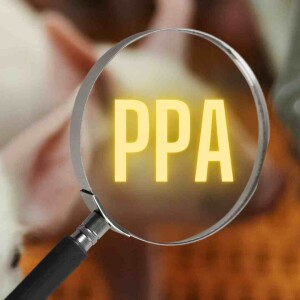
Sunday Apr 23, 2023
Sunday Apr 23, 2023
Ces dernières années, le monde porcin a connu une vague d'activités visant à gérer et à prévenir la propagation de la peste porcine africaine à travers le monde. Cette maladie (qui n'infecte que les porcs) a eu de graves répercussions sur la santé et la production porcine mondialement, causant souvent la mort de près de 100 % des porcs infectés. Au Canada, jusqu'à présent, nous avons eu la chance de maintenir le statut de pays indemne pour la peste porcine africaine, ce qui signifie que la maladie est absente du territoire. Tous les groupes de surveillance des maladies porcines, les vétérinaires porcins nationaux, provinciaux et praticiens ainsi les producteurs se concentrent sur la surveillance et la prévention de cette maladie au Canada.
Dans le cadre de nombreuses initiatives de prévention de la peste porcine africaine, ici au Canada, un programme de surveillance et de dépistage a été créé pour aider à réduire le risque pour le cheptel porcin canadien. CanSpotASF est un programme de dépistage collaboratif qui fonctionne au niveau de laboratoires de diagnostic animal accrédités et spécifiques et dans les abattoirs provinciaux et fédéraux pour aider à détecter la PPA tôt si et quand elle apparaît, afin de minimiser l'impact de la PPA sur les porcs canadiens et les producteurs, et tous ceux qui travaillent dans l'industrie porcine canadienne.
La Dre Karine Talbot, vétérinaire porcine et directrice de la santé animale chez HyLife Inc. et membre de l'un des nombreux groupes de travail CanSpotASF, s'entretient avec moi aujourd'hui pour passer en revue les avantages de ce programme de dépistage et le rôle des vétérinaires et producteurs porcins. dans la surveillance de la PPA.
Liens d’intérêt:
Résumé en une page de CanaVeillePPA (Santé animale Canada (SAC))
Surveillance de la PPA: CanaVeillePPA (SAC)
CanaVeillePPA : laboratoires agréés - Description à l’intention des médecins vétérinaires (SAC)
CanaVeillePPA : laboratoires agréés - Description à l'intention des producteurs (SAC)
CanaVeillePPA : analyses du matériel condamné dans les abattoirs
Document technique de CanaVeillePPA sur les analyses dans les laboratoires agréés
CanSpotASF approved diagnostic testing laboratories (as of Apr. 20, 2023):
Laboratoire de santé animale (LSA)
le Ontario Animal Health Laboratory
le Prairie Diagnostic Services
l'Alberta Agriculture and Forestry Agri-Food Laboratories
le B.C. Animal Health Centre
Note: The CanSpotASF risk-based early detection testing at approved laboratories pilot is open to all Canadian Animal Health Surveillance Network (CAHSN) laboratories. CAHSN laboratories that are not approved for ASF testing can submit samples to a network laboratory that is approved.
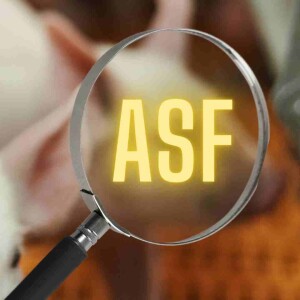
Saturday Apr 22, 2023
Saturday Apr 22, 2023
The past few years in the swine world have seen a flurry of activity to manage and prevent the movement of African Swine Fever around the globe. This disease (which only infects pigs) has had severe impacts on swine health and production worldwide, often causing death of almost 100% of infected pigs. In Canada thus far we have been lucky to maintain ASF disease-free status, which means this disease is not present here. All swine disease surveillance groups, national, provincial and front-line swine veterinarians and producers are focused on vigilant monitoring and prevention of this disease in Canada.
As part of many ASF prevention initiatives, here in Canada a surveillance and testing program was created to help reduce the risk for Canadian swine herd. CanSpotASF is a collaborative diagnostic screening program that works at the level of specific, approved animal diagnostic laboratories and at provincial and federal abattoirs to help detect ASF early if and when it appears, in order to minimize the impact of ASF on Canadian pigs and producers, and all those who work in the Canadian swine industry.
Dr. Karine Talbot, a swine veterinarian, and the Director of Animal Health with HyLife Inc. and a member of several CanSpotASF working groups, reviews the benefits of this screening program and the role for swine vets and producers in ASF surveillance.
Links of Interest:
Overview of CanSpotASF program from Animal Health Canada (AHC)
Details on CanSpotASF program, testing and diagnostic laboratories from AHC
Information for Veterinarians from AHC
Information for Producers on CanSpotASF from AHC
Information for Abattoirs on CanSpotASF from AHC
CanSpotASF Approved Laboratory Testing
CanSpotASF approved diagnostic testing laboratories (as of Apr. 20, 2023):
the MAPAQ laboratory in Quebec
the Ontario Animal Health Laboratory
Prairie Diagnostic Services
Alberta Agriculture and Forestry Agri-Food Laboratories
B.C. Animal Health Centre
Note: The CanSpotASF risk-based early detection testing at approved laboratories pilot is open to all Canadian Animal Health Surveillance Network (CAHSN) laboratories. CAHSN laboratories that are not approved for ASF testing can submit samples to a network laboratory that is approved.
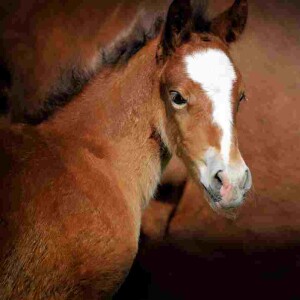
Tuesday Mar 07, 2023
Tuesday Mar 07, 2023
With foaling season upon us, it is the perfect time to take stock of our infection prevention and control practices - we want to ensure our mares have easy foalings and produce the healthiest offspring possible. The first few months of a foal’s life can be challenging as their immune system develops – even in ideal situations they may face bacterial, viral or parasitic infections that can make or break their future health. Dr. Ashley Whitehead, a veterinary internal medicine specialist and associate professor in equine clinical sciences at the University of Calgary, has a passion for all things related to foal health, and reviews how we can optimize foal immunity in this critical first few months of life.
Links of Interest:
Evaluation and Care of Newborn Foals, American Association of Equine Practitioners (AAEP)
Foaling Mare & Newborn: Preparing for a Safe & Successful Foal Delivery, AAEP
Neonatal care, AAEP
Foal Care from Birth to 30 days (AAEP 2003), TheHorse.com



